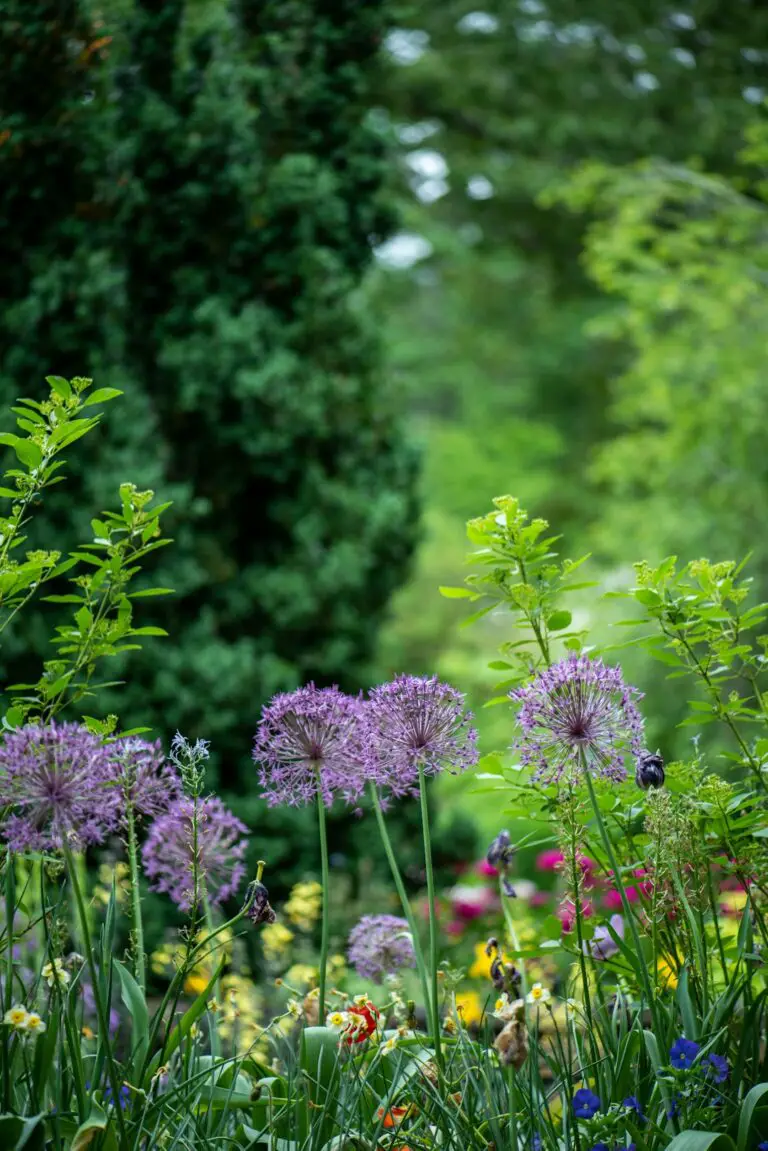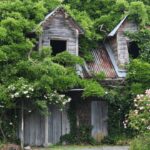Support our educational content for free when you purchase through links on our site. Learn more

Have you ever wondered why community gardens exist? What purpose do they serve? Well, you’re in luck because we’re here to dive deep into the history and significance of community gardens. From their humble beginnings to their role in addressing social issues, community gardens have a rich and fascinating story to tell. So, grab your gardening gloves and let’s explore why community gardens were created!
Table of Contents
- Quick Answer
- Quick Tips and Facts
- Background: The Origins of Community Gardens
- 1. The Evolution of Community Gardens
- 2. The Purpose and Benefits of Community Gardens
- 3. Community Gardens: A Response to Social Challenges
- 4. Community Gardens During the Great Depression
- FAQ
- Conclusion
- Recommended Links
- Reference Links
Quick Answer
Community gardens were created to address various social, economic, and environmental challenges. They serve as spaces for community engagement, food production, education, and environmental stewardship. Community gardens foster a sense of belonging, promote healthy lifestyles, and contribute to the overall well-being of individuals and communities.
👉 CHECK PRICE on: Gardening Tools | Seeds | Compost | Garden Sheds
Quick Tips and Facts
- Community gardens provide individuals and communities with access to fresh, locally grown produce.
- They promote sustainable agriculture practices and environmental stewardship.
- Community gardens foster a sense of community and social connection.
- They offer opportunities for education and skill-building.
- Community gardens can beautify neighborhoods and improve the overall quality of life.
Background: The Origins of Community Gardens

Let’s take a trip back in time to understand the origins of community gardens. The concept of community gardening can be traced back to ancient civilizations, where communal plots of land were cultivated for the benefit of the entire community. These early gardens served as a vital source of food and played a crucial role in sustaining communities.
Fast forward to the 19th century, and we see the emergence of urbanization and industrialization. As cities grew, green spaces became scarce, and people started to feel disconnected from nature. This led to the creation of public parks and gardens, providing urban dwellers with a much-needed respite from the concrete jungle.
1. The Evolution of Community Gardens
Community gardens, as we know them today, have evolved over time to address various societal challenges. Let’s explore the different stages of their evolution:
1.1 Victory Gardens: Cultivating Resilience During War
During World War I and World War II, community gardens played a vital role in supporting the war effort. These gardens, known as Victory Gardens, were encouraged by governments to alleviate food shortages and boost morale. People were encouraged to grow their own fruits and vegetables, reducing the strain on the food supply chain and ensuring that essential resources were available for the troops.
1.2 Urban Renewal and Community Development
In the mid-20th century, community gardens took on a new role in urban renewal and community development. As cities faced economic decline and social challenges, community gardens became spaces for revitalization. They transformed vacant lots and abandoned spaces into vibrant green oases, fostering a sense of community and pride.
1.3 Environmental Justice and Food Security
In recent years, community gardens have gained prominence in addressing environmental justice and food security issues. They provide access to fresh, nutritious food in underserved communities, often referred to as food deserts. Community gardens empower individuals to take control of their food sources and promote sustainable agriculture practices.
2. The Purpose and Benefits of Community Gardens
Community gardens serve a multitude of purposes and offer a wide range of benefits. Let’s explore some of the key reasons why community gardens were created:
2.1 Community Engagement and Social Connection
Community gardens bring people together, fostering a sense of belonging and social connection. They provide a space for individuals from diverse backgrounds to interact, share knowledge, and collaborate. Gardening becomes a shared experience, strengthening community bonds and creating a supportive network.
2.2 Food Production and Access to Fresh Produce
One of the primary purposes of community gardens is to produce fresh, locally grown food. They offer individuals and communities the opportunity to grow their own fruits, vegetables, and herbs. This not only promotes healthy eating habits but also provides access to nutritious food, especially in areas where fresh produce is scarce.
2.3 Education and Skill-Building
Community gardens serve as outdoor classrooms, offering valuable educational opportunities. They provide a hands-on learning experience, teaching individuals about gardening techniques, sustainable practices, and environmental stewardship. Community gardens also offer workshops, seminars, and demonstrations to enhance gardening skills and knowledge.
2.4 Environmental Stewardship and Sustainability
By promoting sustainable gardening practices, community gardens contribute to environmental stewardship. They encourage organic gardening methods, composting, water conservation, and the use of native plants. Community gardens play a crucial role in creating green spaces, improving air quality, and supporting biodiversity in urban areas.
2.5 Health and Well-being
Gardening has numerous health benefits, both physical and mental. Community gardens provide opportunities for physical activity, reducing the risk of chronic diseases. They also offer a therapeutic environment, reducing stress and promoting mental well-being. Engaging in gardening activities can boost self-esteem and improve overall quality of life.
3. Community Gardens: A Response to Social Challenges
Community gardens have always been a response to social challenges, addressing issues such as economic recession, war, urban decline, and environmental injustice. Let’s explore how community gardens have played a crucial role in these challenging times:
3.1 Economic Recession and Food Insecurity
During times of economic recession, community gardens become a lifeline for individuals and families facing food insecurity. They provide a means to grow their own food, reducing reliance on expensive grocery stores. Community gardens empower individuals to take control of their food sources and build resilience in the face of economic uncertainty.
3.2 War and National Crisis
As mentioned earlier, community gardens played a significant role during times of war. Victory Gardens not only helped alleviate food shortages but also boosted morale and patriotism. In times of national crisis, community gardens serve as symbols of resilience and unity, reminding us of our collective strength.
3.3 Urban Decline and Environmental Injustice
In areas affected by urban decline and environmental injustice, community gardens offer a glimmer of hope. They transform neglected spaces into vibrant green havens, beautifying neighborhoods and improving the overall quality of life. Community gardens empower communities to reclaim their environment and advocate for environmental justice.
4. Community Gardens During the Great Depression
The Great Depression of the 1930s was a time of immense hardship and economic struggle. Community gardens played a crucial role in providing relief and support to individuals and families. These gardens, often referred to as relief gardens, offered a source of food and income for those affected by the economic downturn. They became a symbol of resilience and self-sufficiency during one of the most challenging periods in American history.
FAQ

Why did community gardens start?
Community gardens started as a means to address various social, economic, and environmental challenges. They were created to provide access to fresh, locally grown food, foster community engagement, promote sustainable practices, and address issues such as food insecurity, urban decline, and environmental injustice.
Read more about “A Short History of Community Gardens: Grown from the Past …”
What is the purpose of the community garden?
The purpose of a community garden is multifaceted. It serves as a space for community engagement, food production, education, and environmental stewardship. Community gardens promote social connection, provide access to fresh produce, offer educational opportunities, and contribute to the overall well-being of individuals and communities.
Read more about “Advantages and Disadvantages of Home Gardening … 🌱”
Why were community gardens so crucial during times of war and economic strife in 20th-century America?
Community gardens were crucial during times of war and economic strife in 20th-century America for several reasons. They helped alleviate food shortages, reduce the strain on the food supply chain, boost morale, and promote self-sufficiency. Community gardens empowered individuals to take control of their food sources and build resilience in the face of adversity.
What were community gardens during the Great Depression?
During the Great Depression, community gardens, also known as relief gardens, played a vital role in providing food and income for individuals and families affected by the economic downturn. These gardens offered a source of relief and support, allowing people to grow their own food and supplement their meager incomes.
Conclusion

Community gardens have a rich history and serve a multitude of purposes. They address social, economic, and environmental challenges, fostering community engagement, promoting sustainable practices, and providing access to fresh produce. From their origins in ancient civilizations to their role in addressing modern-day issues, community gardens continue to play a vital role in our society. So, whether you’re a seasoned gardener or a curious beginner, consider joining or starting a community garden near you and experience the many benefits it has to offer!
Remember, community gardens are not just about growing plants; they are about growing together as a community and making a positive impact on the world around us. So, grab your shovel, put on your gardening gloves, and let’s get growing!
Recommended Links
- Benefits of Community Gardens
- Community Garden Events
- Community Garden Policies
- Gardening for Beginners
- Garden Design Ideas
- The Purpose of Community Gardens: Why They Matter in 2023


